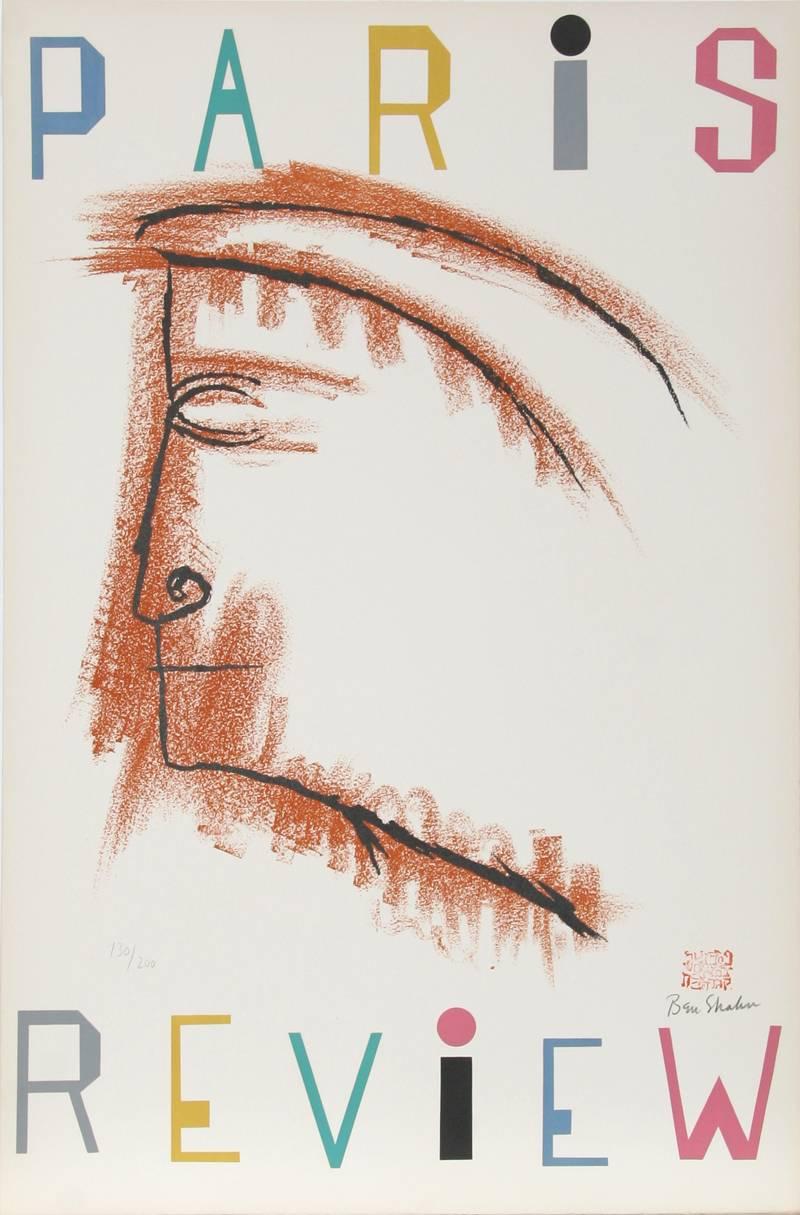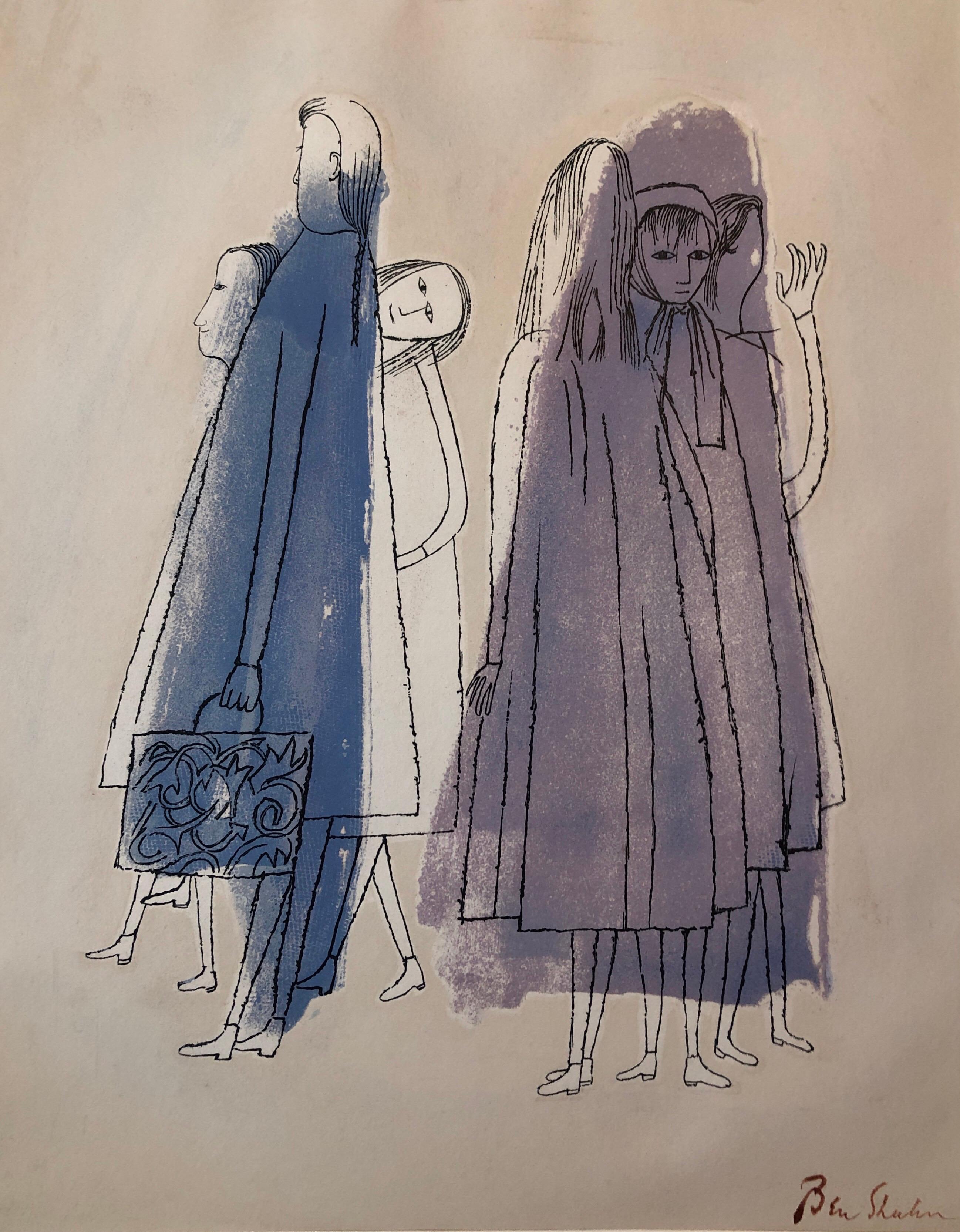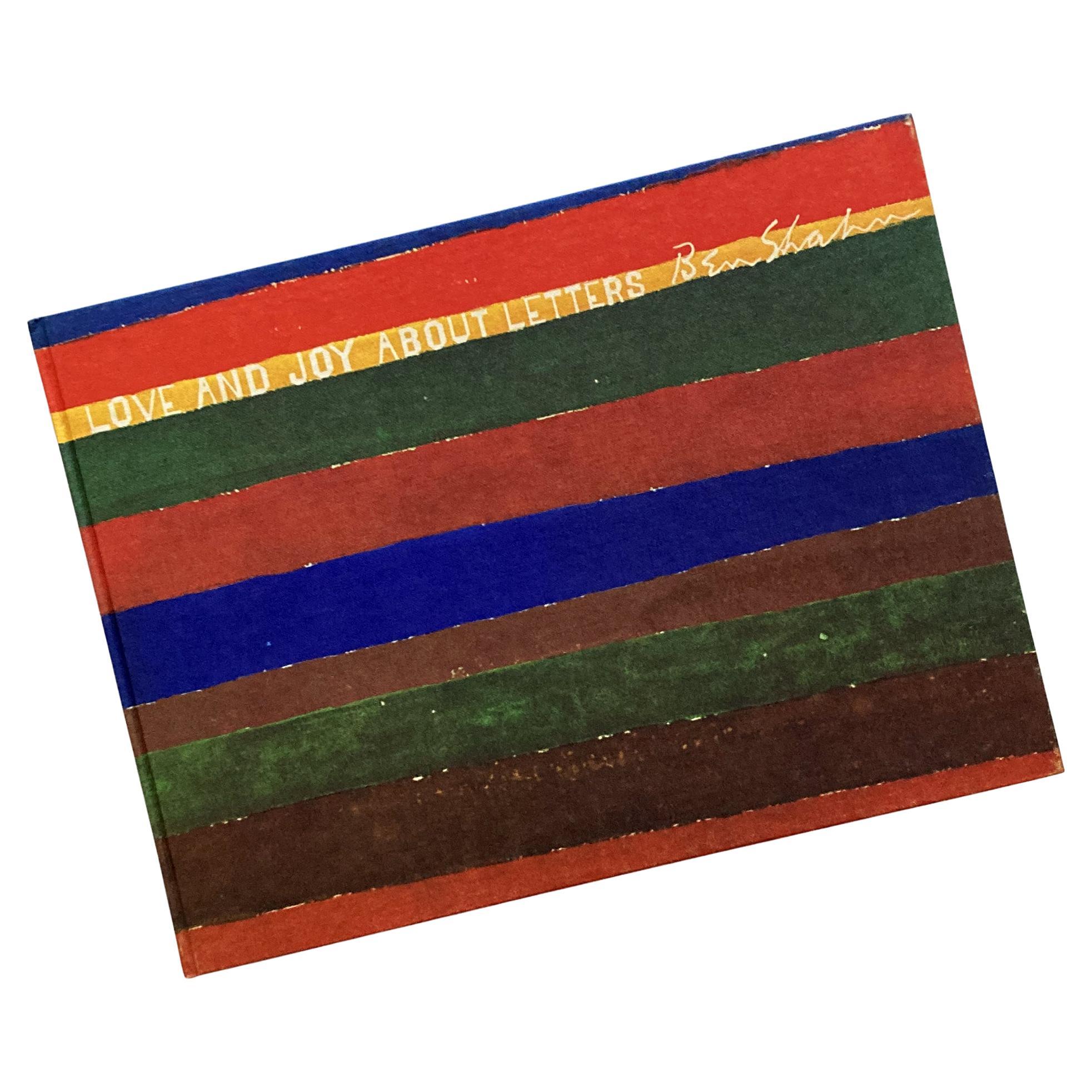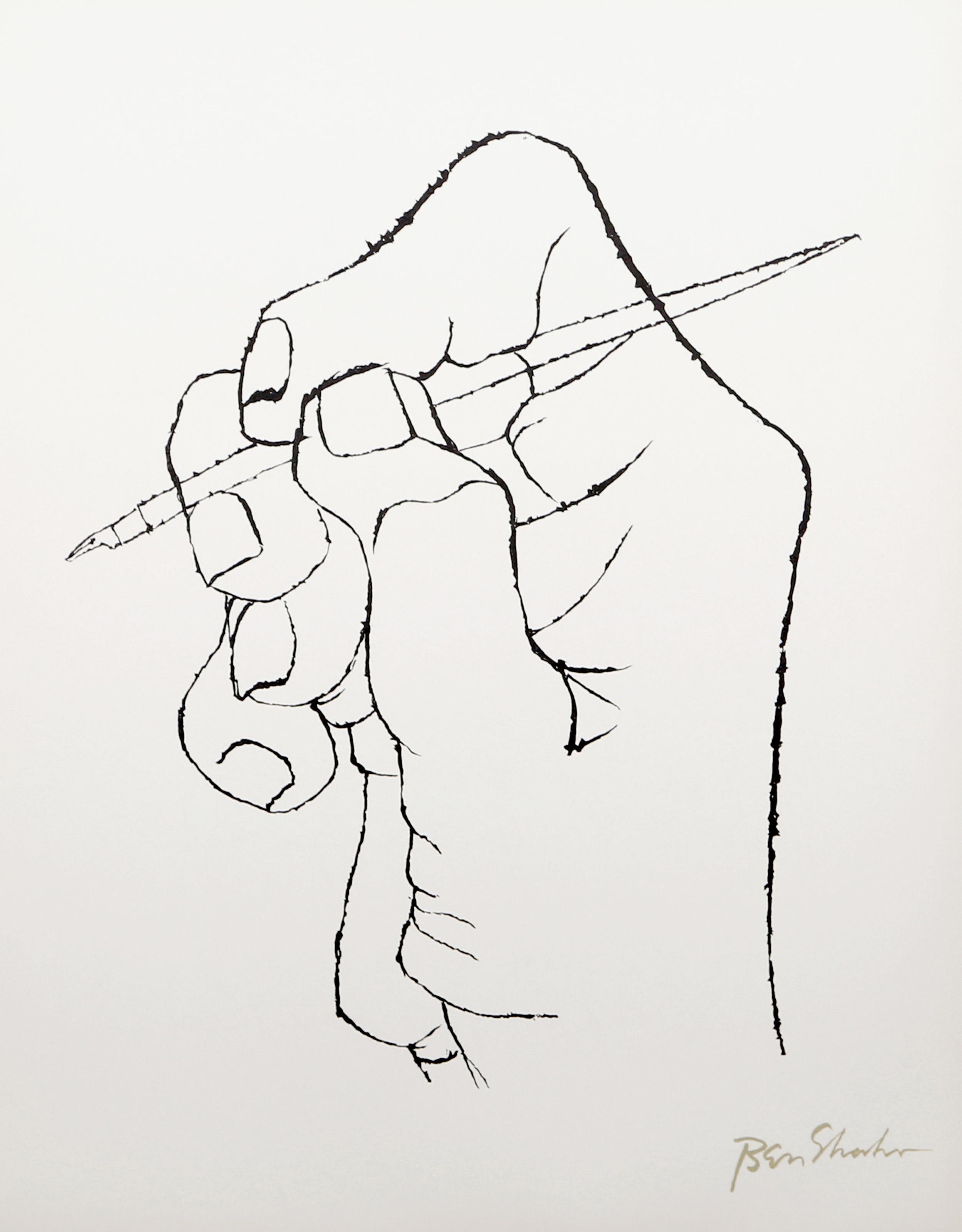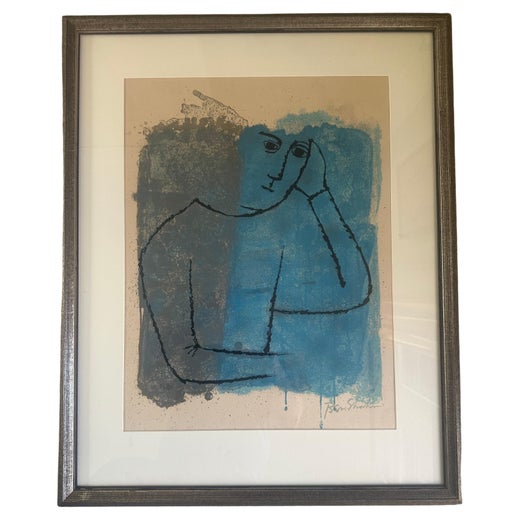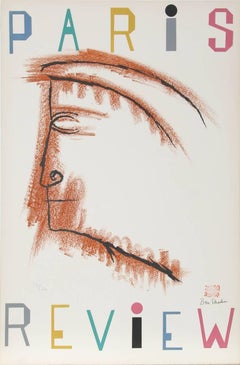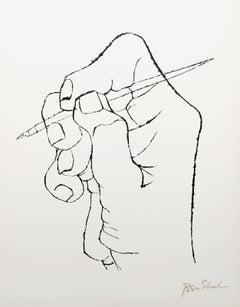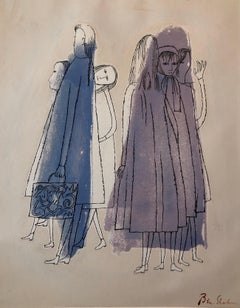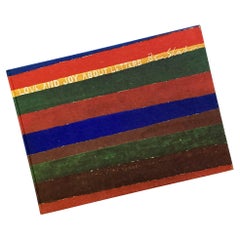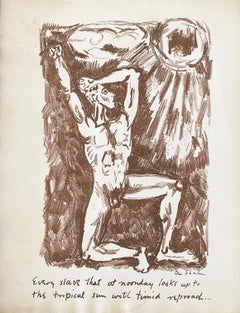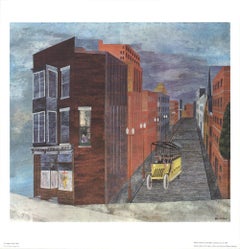Items Similar to Halleluja Portfolio by Ben Shahn, 24 Lithographs in Portfolio Case
Want more images or videos?
Request additional images or videos from the seller
1 of 21
Ben ShahnHalleluja Portfolio by Ben Shahn, 24 Lithographs in Portfolio Case1970-1971
1970-1971
$2,500
£1,946.83
€2,214.52
CA$3,600.42
A$3,951.01
CHF 2,063.63
MX$47,238.69
NOK 26,139.54
SEK 24,380.04
DKK 16,539.34
About the Item
The Hallelelujah Portfolio by Ben Shahn Illustrating the 150th Psalm from the Old Testament of the Holy Bible. Including an introduction by Bernarda Bryson Shahn and with a letter from Fernand Mourlot. Contains 24 prints in original portfolio case, cover sheets, text and colophon.
Artist: Ben Shahn, American (1898 - 1969)
Title: The Hallelujah Portfolio
Year: 1970-71
Medium: 24 Lithographs Bound as issued
Edition: 240
Sheet: 16 x 16.5 inches
Portfolio Size: 18 x 19 x 2.5 in. (45.72 x 48.26 x 6.35 cm)
Printer: Atelier Mourlot, New York
Published by Kennedy Graphics, New York
- Creator:Ben Shahn (1898-1969, American)
- Creation Year:1970-1971
- Dimensions:Height: 22.5 in (57.15 cm)Width: 17.75 in (45.09 cm)Depth: 2.5 in (6.35 cm)
- Medium:
- Movement & Style:
- Period:
- Condition:
- Gallery Location:Long Island City, NY
- Reference Number:1stDibs: LU4665076282
Ben Shahn
Ben Shahn (1898 – 1969) was a Lithuanian-born American artist. He is best known for his works of social realism, his left-wing political views, and his series of lectures published as The Shape of Content. Shahn began his path to becoming an artist in New York, where he was first trained as a lithographer. Shahn's early experiences with lithography and graphic design is apparent in his later prints and paintings which often include the combination of text and image. Shahn's primary medium was egg tempera, popular among social realists. Shahn mixed different genres of art. His body of art is distinctive for its lack of traditional landscapes, still lifes, and portraits. Shahn used both expressive and precise visual languages, which he coalesced through the consistency of his authoritative line. Shahn is also noted for his use of unique symbolism, which is often compared to the imagery in Paul Klee's drawings. His art is striking but also introspective. He often captured figures engrossed in their own worlds. Although he used many mediums, his pieces are consistently thoughtful and playful.
About the Seller
4.9
Platinum Seller
Premium sellers with a 4.7+ rating and 24-hour response times
Established in 1979
1stDibs seller since 2014
3,176 sales on 1stDibs
Typical response time: 1 hour
- ShippingRetrieving quote...Shipping from: Long Island City, NY
- Return Policy
More From This Seller
View AllParis Review, Modern Art Lithograph by Ben Shahn
By Ben Shahn
Located in Long Island City, NY
Artist: Ben Shahn, American (1898 - 1969)
Title: Paris Review
Year: 1968
Medium: Lithograph on Arches, Signed in black crayon, numbered in pencil
Edition: 200
Paper Size: 39 x 26 in....
Category
1960s American Modern Figurative Prints
Materials
Lithograph
Partings Long Seen Coming from the Rilke Portfolio
By Ben Shahn
Located in Long Island City, NY
Artist: Ben Shahn, American (1898 - 1969)
Title: Partings Long Seen Coming from the Rilke Portfolio
Year: 1968
Medium: Lithograph on Richard de Bas, si...
Category
1960s American Realist Figurative Prints
Materials
Lithograph
The First Word of Verse Arises from the Rilke Portfolio, lithograph by Ben Shahn
By Ben Shahn
Located in Long Island City, NY
Artist: Ben Shahn, American (1898 - 1969)
Title: The First Word of Verse Arises from the Rilke Portfolio
Year: 1968
Medium: Lithograph on Arches, signed in the plate
Edition: 750
Siz...
Category
1960s Modern Figurative Prints
Materials
Lithograph
Beside the Dying from the Rilke Portfolio, Ben Shahn
By Ben Shahn
Located in Long Island City, NY
Artist: Ben Shahn, American (1898 - 1969)
Title: Beside the Dying from the Rilke Portfolio
Year: 1968
Medium: Lithograph, signed in the plate
Edition: 750
Size: 22.5 x 17.75 in. (57...
Category
1960s Modern Figurative Prints
Materials
Lithograph
Memories of Many Nights of Love from the Rilke Portfolio
By Ben Shahn
Located in Long Island City, NY
Artist: Ben Shahn, Lithuanian/American (1898 - 1969)
Title: Memories of Many Nights of Love from the Rilke Portfolio
Year: 1968
Medium: Lithograph on Richard de Bas, printed signatur...
Category
1960s American Realist Figurative Prints
Materials
Lithograph
Many Things from the Rilke Portfolio, Minimalist lithograph by Ben Shahn
By Ben Shahn
Located in Long Island City, NY
Artist: Ben Shahn, American (1898 - 1969)
Title: Many Things from the Rilke Portfolio
Year: 1968
Medium: Lithograph on Arches, signed in the plate
Edition: 750
Size: 22.5 x 17.75 in....
Category
1960s Modern Figurative Prints
Materials
Lithograph
You May Also Like
Ben Shahn Original Hand Signed Litho WPA Artist Rilke Poem Lithograph Portfolio
By Ben Shahn
Located in Surfside, FL
"To Days of Childhood That are Still Unexplained". It depicts six female silhouette figures in long dresses or coats against a blue and pastel purple background. From the Rainier Ma...
Category
1950s American Modern Figurative Prints
Materials
Lithograph
Ben Shahn, Love and Joy About Letters, 1963 1st Edition, Grossman Publishers
Located in New York, NY
Ben Shahn, Love and Joy About Letters, 1963 1st Edition, Grossman Publishers. Love and Joy About Letters is a testament to Ben Shahn’s love affair with letters: the beauty of the let...
Category
20th Century American Books
Materials
Paper
$636 Sale Price
20% Off
Ben Shahn Original Lithograph From Portfolio - Levana & Our Ladies Of Sorrow
By Ben Shahn
Located in Surfside, FL
SCARCE EARLY WORK. BEN SHAHN
Levana and our Lady's Sorrows.
lithograph printed in sepia on Papier Ancien, 1931. 13 1/8x9 7/8 inches (sheets), full margins, loose as issued.
One of o...
Category
Mid-20th Century American Modern Figurative Prints
Materials
Lithograph
Ben Shahn 'Ohio Magic'- Offset Lithograph
By Ben Shahn
Located in Brooklyn, NY
This print features Ben Shahn's *Ohio Magic*, a striking work that exemplifies the artist’s signature style, blending social commentary with vivid imagery. Presented by the Californi...
Category
Late 20th Century Prints and Multiples
Materials
Offset
$72 Sale Price
20% Off
"November 26, 1963" JFK Limited Edition Book Signed by Ben Shahn & W. Berry
By Ben Shahn
Located in San Diego, CA
"November Twenty Six Nineteen Hundred Sixty Three / November 26, 1963" John F. Kennedy book with sleeve signed by artist, Ben Shahn and poet, Wendell Berry, circa 1964. This limited ...
Category
Mid-20th Century American Mid-Century Modern Books
Materials
Paper
$240 Sale Price
20% Off
Silkscreen with Old Testament Psalm 57 pencil signed 255/300 provenance letter
By Ben Shahn
Located in New York, NY
Ben Shahn
Silkscreen inspired by Old Testament Psalm 57, 1967
Silkscreen on Japon paper
Hand signed and numbered 255/300 by the artist on the front, with a copy of the provenance let...
Category
Mid-20th Century Modern Figurative Prints
Materials
Pencil, Screen
Read More
Romare Bearden’s Humanity Infuses His Bright, Bold Art
Through collage, painting and printmaking, the artist foregrounded Black life in America in revolutionary new ways.
Chryssa’s 1962 Neon Sculpture Was Way ahead of the Art-World Curve
By working with lettering, neon and Pop imagery, Chryssa pioneered several postmodern themes at a time when most male artists detested commercial mediums.
More Ways To Browse
J Alphege Brewer
J Didier
Jack Chandler
James A Pritchard
Jane Rogers
Japanese Warrior Woodblock Print
Japanese Woodblock Print Kuniyoshi
Japanese Woodblock Tree
Jean Jacques Sempe
Jean Michel Folon On Sale
Jennifer Packer
Jim Dine 8 Hearts
Jim Dine Flowers
Jim Vest
Jockstrap Vintage
John Lawrence Doyle
John Lennon The Hug
John Stuart Curry
